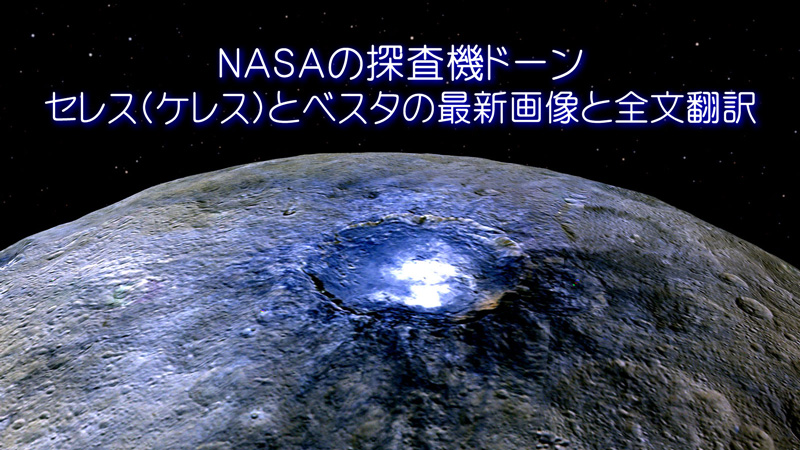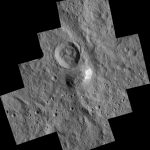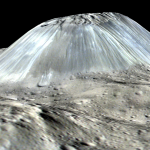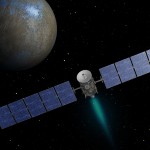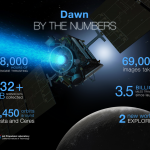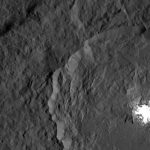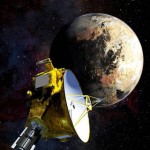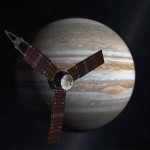2017/12/13

Image Details
Mission: Dawn
Target: Ceres
Spacecraft: Dawn
Instrument: Framing Camera
Image credit: NASA/JPL-Caltech/UCLA/MPS/DLR/IDA
オリジナル記事:
Dawn LAMO Image 197
This image, taken by NASA’s Dawn spacecraft, shows a series of linear features, which are depressions that located within the large Yalode Crater on Ceres. The widest of the linear features is approximately 0.9 miles (1.5 kilometers) in width.
Scientists think these features formed when extensional stresses pulled the surface of Ceres apart. In the upper part of the image, the linear features cut through several impact craters, indicating that the fractures are younger than those particular craters.
The linear features are not the youngest things visible in this view, however. There are also small impact craters imprinted upon them, meaning those craters must have appeared more recently.
Yalode is 160 miles (260 kilometers) in diameter.
Dawn took this image on June 15, 2016, from its low-altitude mapping orbit, at a distance of about 240 miles (385 kilometers) above the surface. The image resolution is 120 feet (35 meters) per pixel.
日本語訳:
NASAの探査機ドーンで撮影されたこの画像には、セレスにある大きなヤロド・クレーター内部にある線状に伸びている奇妙なものが写っています。この形状物の最も幅の広いところで約0.9マイル(1.5Km)あります。
科学者たちは、セレスの地表を引っぱる力が作用してこの形状が形成されると考えています。画像の上部では、線上のものがいくつかのクレーターを切断するように通過していますが、それはそこにあったクレーターより形成された時代が新しいことを示しています。
しかしながら、この線形の形状は最っとも新しいものでもありません。小さなクレーターがその上にできているからです。つまり、この画像の中ではこの小さなクレーターが一番新しいものになります。
ヤロド・クレーターの直径は160マイル(260Km)です。
NASAの探査機ドーンは、2016年6月15日に低い高度の軌道から、表面上空約240マイル(385キロメートル)の高さからこの画像を撮影しました。画像の解像度は1ピクセルあたり120フィート(35m)です。
訳者注:
この木の根のような、あるいは血管のようにも見える奇妙な地形は、セレスの地表で生じた引っ張り(引き離し)の力で生じたものだとのことです。
